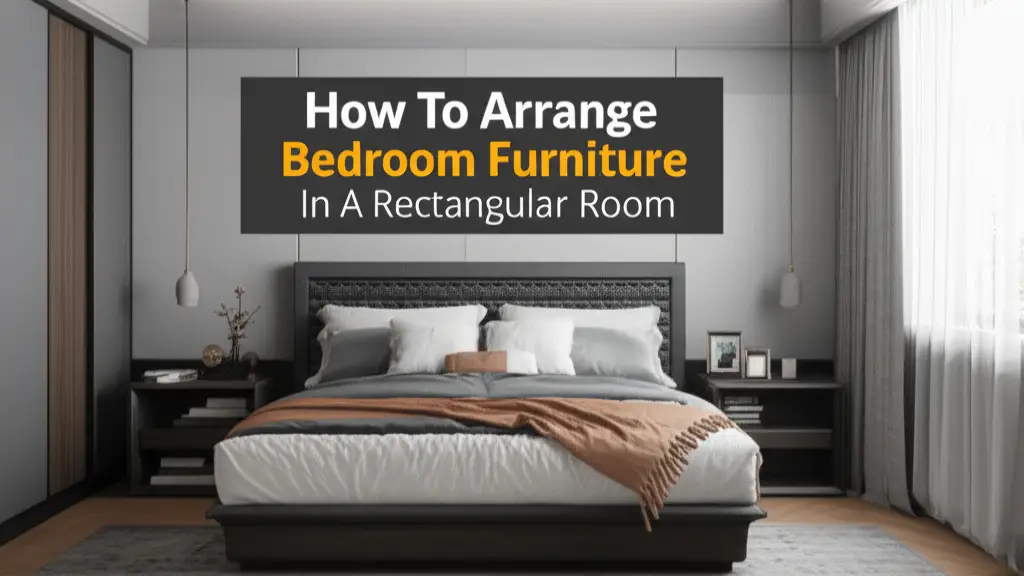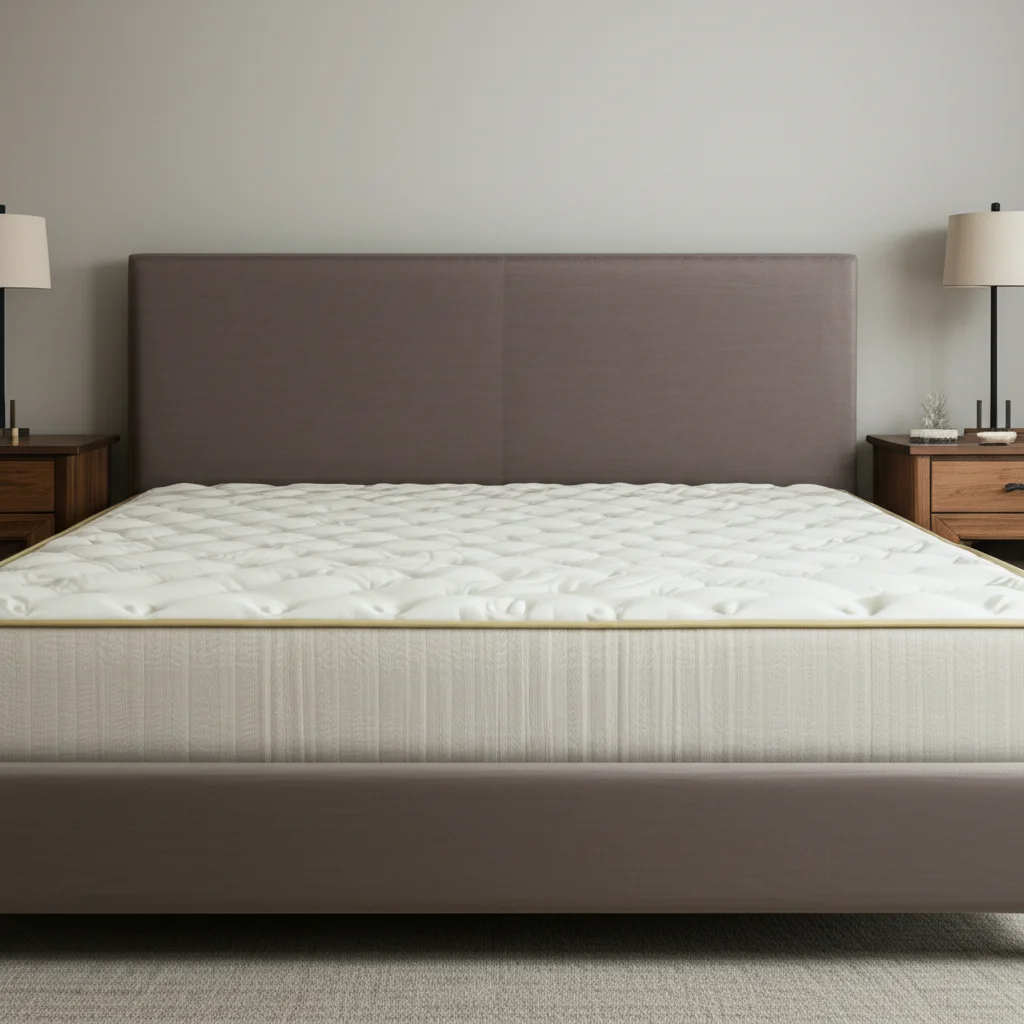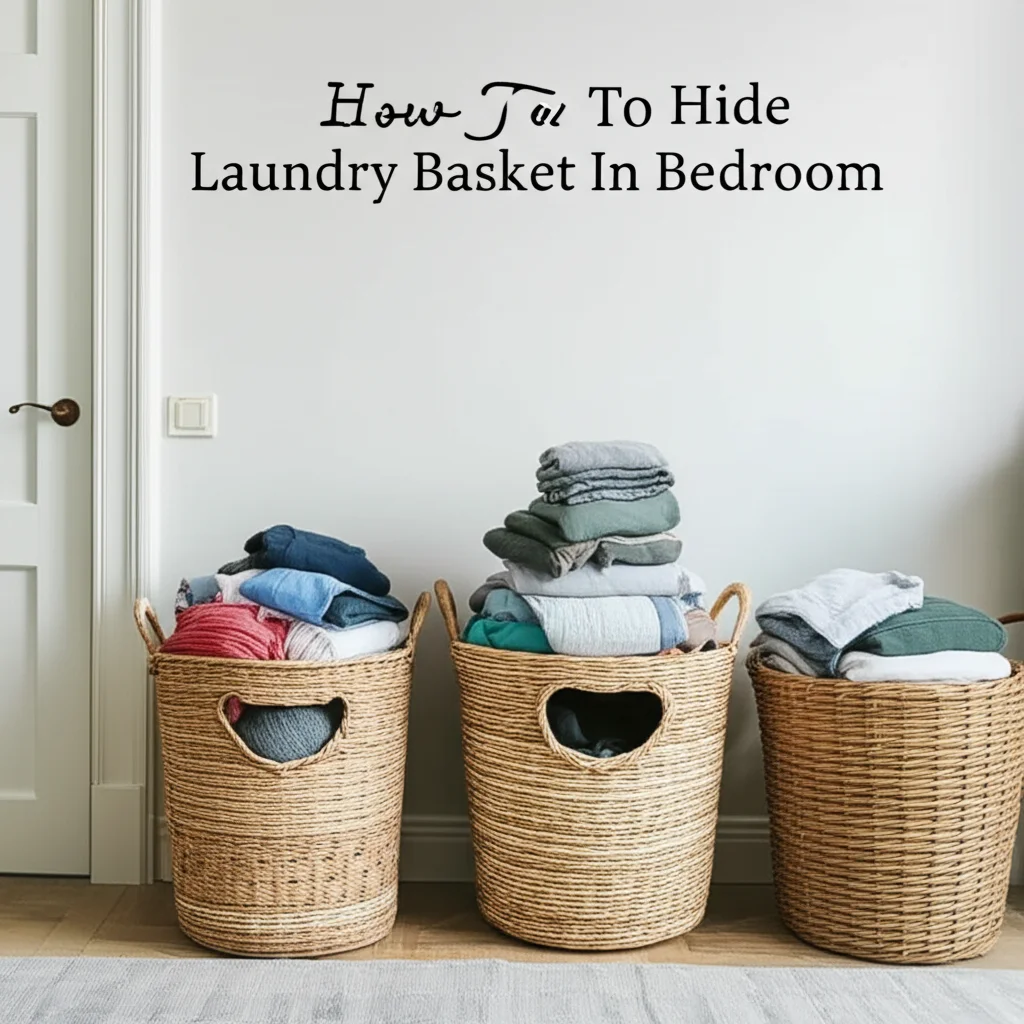· Davia Murnell · Home Organization · 15 min read
How To Arrange Bedroom Furniture In A Rectangular Room

Optimize Your Rectangular Bedroom Layout
Do you have a rectangular bedroom that feels a bit awkward or hard to furnish? Many people do. You are not alone in this challenge. Learning how to arrange bedroom furniture in a rectangular room makes a big difference. It transforms a simple space into a functional and beautiful sanctuary. This guide will walk you through essential principles. We will discuss bed placement, how to use other furniture, and tips for making your rectangular bedroom feel just right.
Takeaway
- Plan your layout first: Measure your room and furniture before moving anything.
- Establish a focal point: Your bed usually works best as the room’s main focus.
- Place the bed wisely: Decide if a long wall or short wall works better for your room size and flow.
- Utilize vertical space: Add tall storage like shelves or dressers to save floor space.
- Define clear zones: Create areas for sleeping, dressing, or working to improve function.
To arrange bedroom furniture in a rectangular room, focus on placing the bed as the primary anchor point, ideally on the longest wall to balance the space. Then, position other furniture like dressers and nightstands to support this focal point, ensuring clear pathways and utilizing vertical space to enhance both function and visual appeal.
Understanding Your Rectangular Bedroom Space
Arranging furniture in any room starts with understanding the space. A rectangular bedroom has distinct long and short walls. This shape offers clear opportunities for layout design. You should begin by measuring your room’s exact dimensions.
I always grab a tape measure before I start any furniture moving. Knowing the length and width helps you make smart choices. You should also note where windows and doors are. These fixed elements limit placement options. Electrical outlets also matter for lamps and electronics.
Creating a simple floor plan sketch helps visualize everything. You can draw it on paper or use an online tool. Draw the shape of your room. Mark where windows and doors are located. Then, draw out your furniture pieces to scale. You can cut out paper shapes to represent your bed, dresser, and nightstands. Move these paper cutouts around the sketch. This helps you see different arrangements before you do any heavy lifting. This step saves a lot of effort. It also prevents you from pushing furniture around multiple times.
Think about the flow of the room. How will you walk from the door to the bed? Where will you go to get dressed? Good flow means clear pathways. You do not want to bump into furniture. A well-planned layout feels open and inviting. It allows you to move easily through your personal space.
Establishing a Focal Point in a Rectangular Room
Every well-designed room benefits from a clear focal point. This is the main feature that draws your eye. It anchors the room and gives it purpose. For most bedrooms, the bed naturally becomes this focal point.
You can enhance the bed’s role as the focal point. Place it against the most prominent wall. Add a decorative headboard. Use striking bedding or throw pillows. Sometimes, a beautiful window or a piece of large artwork can serve as an alternative focal point. If your window offers a great view, place your bed to face it. This creates a relaxing view right from your bed. Just like how to arrange living room furniture with a fireplace and TV requires a central viewing area, your bedroom needs a clear point of interest.
Once you establish your focal point, arrange other furniture around it. This creates balance. For example, if your bed is on a long wall, balance it with nightstands on each side. A dresser might go on an adjacent wall. This approach ensures the room feels organized. It avoids a cluttered appearance.
The focal point guides your arrangement decisions. It prevents your room from feeling like a random collection of furniture. A strong focal point makes your rectangular bedroom feel intentional and put together. It gives a sense of calm and order to your personal space. This is very important for a bedroom.
Strategic Bed Placement in a Rectangular Bedroom
Placing your bed is the most important decision in a rectangular room. Your choice impacts the entire room’s function and feel. There are generally three main options: against a long wall, against a short wall, or floating in the room. Each option has its own benefits and drawbacks.
Placing the bed against the longest wall is often the best choice for many rectangular bedrooms. This placement helps the room feel wider and more balanced. It leaves the shorter walls free for other furniture, like a dresser or a wardrobe. This setup works especially well in smaller rectangular rooms. It maximizes floor space for walking. My own bedroom is rectangular. I found placing my bed on the long wall created the most open feel. It allowed for easy movement around the room.
If your rectangular room is very long and narrow, placing the bed on a short wall can work. This makes the room feel less like a hallway. It uses the narrow width for the bed. This option frees up the long walls for a desk, a dresser, or a seating area. However, it can make the room feel even longer if not balanced with other elements. You must be careful with this choice. It is usually better for wider rectangular rooms that still have a distinct long dimension.
Floating the bed in the middle of the room is an option for very large rectangular bedrooms. This creates a luxurious, open feel. It requires a lot of space behind the bed for a console table or low storage. This approach is not suitable for most standard rectangular bedrooms. It works best in lofts or master suites. Always ensure you have clear walking paths around the bed. You need at least 2-3 feet of space on all sides. Consider the headboard style. A tall, grand headboard works well as a visual anchor. You can also use a simple headboard with dramatic wall decor. Your bed choice truly shapes the room.
Arranging Essential Furniture Pieces Effectively
Once your bed is in place, you can arrange your other essential furniture. This includes nightstands, dressers, and wardrobes. Proper placement helps maintain flow and balance in your rectangular bedroom. It also ensures every piece serves its purpose well.
Nightstands are crucial for bedside convenience. They should sit on either side of your bed. Choose nightstands that are roughly the same height as your mattress. This makes it easy to reach items. The size of the nightstands should match the scale of your bed. A large king-sized bed needs more substantial nightstands. A small twin bed looks best with petite ones. Do not let nightstands block pathways. They should fit snugly beside the bed without creating an obstacle. I like using nightstands with drawers. They offer hidden storage for small items.
Dressers and chests provide vital storage. Place them along an open wall. A longer wall is often ideal for a dresser. This prevents it from feeling cramped. Consider the height of your dresser. A tall dresser uses vertical space well in a small room. A wide, low dresser can make a long wall feel less empty. Make sure there is enough space in front of the dresser drawers to open fully. You do not want drawers bumping into the bed or another piece of furniture. If your room is very long, you might place a dresser on one of the shorter walls to break up the length.
Wardrobes or armoires are often the largest pieces of furniture after the bed. They usually work best on a long, clear wall. If your room is narrow, you might consider a wardrobe with sliding doors instead of swinging doors. This saves space. Desks and seating areas can create functional zones within the rectangular room. Place a desk in a corner or against a wall that gets good natural light. A small armchair or bench can create a reading nook. Always ensure scale and proportion. Large furniture in a small room feels overwhelming. Small furniture in a large room looks lost. Balance is key for a harmonious look.
Maximizing Space and Storage in a Rectangular Layout
Rectangular bedrooms, especially smaller ones, benefit greatly from smart space planning and storage solutions. Every inch counts. Maximizing your storage helps keep the room tidy. A tidy room feels larger and more peaceful.
Vertical storage is your best friend in a rectangular room. Tall bookshelves or wall-mounted shelves draw the eye upward. This creates an illusion of height. It also keeps your floor space clear. Think about adding a tall, narrow dresser instead of a wide, short one. Use floating shelves above your bed or desk. These are great for displaying decorative items or storing books. I often recommend installing shelves on unused wall sections. They are perfect for small items.
Under-bed storage is another effective solution. Many beds come with built-in drawers. If yours does not, use rolling storage bins that slide underneath. This space is ideal for out-of-season clothes, extra bedding, or shoes. You can also find bed frames that lift up, revealing a large storage area underneath. This is a clever way to hide clutter.
Multi-functional furniture is a game-changer. Consider an ottoman that opens for storage. A bench at the foot of your bed can hold blankets and also offer extra seating. A sofa bed can provide guest sleeping options in a larger rectangular room. Built-in units, if your budget allows, offer custom storage. They fit perfectly into alcoves or along a wall. This provides a seamless look. However, standalone pieces are often more flexible. Remember that decluttering is the first step to maximizing space. Get rid of items you do not need. This leaves more room for the items you love and use daily. For more permanent solutions that add space, consider how to build a walk-in closet in an existing room. This can free up significant space in your main bedroom area.
Lighting, Rugs, and Accessories for Rectangular Bedrooms
Lighting, rugs, and accessories complete your rectangular bedroom design. They add personality and enhance functionality. These elements also play a role in how spacious your room feels.
Layered lighting is essential for any room. It allows you to adjust the ambiance. Start with ambient lighting. This is your main overhead light. Then add task lighting, like a reading lamp on your nightstand. Finally, add accent lighting, such as a floor lamp in a corner or string lights. This creates different moods. Strategic lighting can make a rectangular room feel less tunnel-like. For example, placing lamps at the far end of a long room can draw the eye through the space.
Rugs define zones and add warmth. A large area rug under your bed can anchor the sleeping area. It also adds a soft texture. Make sure the rug is large enough to extend beyond the bed sides. This pulls the furniture together. For instance, if you have a queen bed, a 8x10-foot rug is usually a good size. It should extend about 18 inches beyond the sides and foot of the bed. Understanding how do you fit a rug under a dining room table offers similar principles for proportion and placement, even if the room type differs.
Mirrors are excellent accessories for rectangular rooms. They reflect light and create an illusion of more space. Place a large mirror on a wall opposite a window. This bounces light around the room. A full-length mirror on a narrow wall can make that wall seem wider. Artwork and other decor add your personal touch. Hang art at eye level. Use wall art to break up long, empty walls. This adds visual interest. Do not over-decorate. A few well-chosen pieces are better than too many small items. Think about scale when choosing decor. Small items get lost in a large room. Large items can overwhelm a small room.
Creating Zones and Flow in Your Bedroom
A rectangular bedroom can feel like a single, undifferentiated space. However, you can create distinct zones within it. This makes the room more functional and visually interesting. Defining these areas improves how you use your bedroom every day.
Think about the different activities you do in your bedroom. You sleep, of course. But you might also read, work, or get dressed. You can dedicate specific corners or sections for these activities. For example, your bed area is the sleep zone. A small desk and chair form a work zone. An armchair with a floor lamp creates a reading nook. This zoning gives purpose to different parts of the room. It makes the space work harder for you.
You can use furniture placement to separate these zones. A bookshelf can act as a subtle room divider. Place an area rug under your desk to define the work area. A screen or a curtain can offer more privacy for a dressing zone. Even the way you arrange your essential furniture can imply zones. For example, facing a dresser away from the bed can create a separate dressing area. These subtle divisions make the rectangular room feel like multiple smaller, functional spaces. This is similar to how you define areas in a larger living space, such as when you consider how to arrange living room furniture with a fireplace and TV.
Ensuring clear pathways between these zones is crucial. You want to move easily from your bed to your dresser or to your desk. Avoid placing furniture in ways that block walkways. Keep at least 2-3 feet of clearance for major paths. Do not create bottlenecks. Visual tricks can also help a rectangular room. For example, placing a large piece of art on a short wall can make that wall feel larger. Using horizontal stripes on one wall can make a narrow room appear wider. Avoiding too much clutter helps maintain good flow. A clear path makes your bedroom feel open and comfortable.
FAQ Section
Q1: What is the best way to arrange a small rectangular bedroom?
For a small rectangular bedroom, focus on essential furniture. Place your bed against the longest wall to maximize floor space. Use vertical storage like tall dressers or wall shelves. Choose multi-functional furniture, such as a bed with built-in drawers. Keep pathways clear to maintain good flow.
Q2: How do you make a long, narrow bedroom look wider?
To make a long, narrow bedroom look wider, place your bed on one of the short walls if possible. Use horizontal stripes on the longest walls, either with paint or wallpaper. Place a large mirror on a long wall to reflect light and expand the space visually. Use bright colors and ample lighting.
Q3: Should the bed go on the long or short wall in a rectangular room?
The bed usually goes on the longest wall in a rectangular room. This balances the room and creates a more open feel. However, if your room is very long and narrow, placing the bed on a short wall can break up the “bowling alley” effect. Consider room size and window/door placement.
Q4: What furniture should I prioritize in a rectangular bedroom?
Prioritize the bed, as it is the largest and most central piece. Next, focus on essential storage like a dresser or wardrobe. If space allows, add nightstands. Any other furniture, such as a desk or seating, comes after these necessities are well-placed. Choose pieces that fit the room’s scale.
Q5: How can I improve the flow in my rectangular bedroom?
Improve flow by ensuring clear pathways around all furniture. Allow at least 2-3 feet of walking space. Avoid placing large items where they block doors or windows. Angle furniture slightly if needed to guide movement. Declutter regularly to keep the space open and easy to move through.
Q6: Can I have a desk in a small rectangular bedroom?
Yes, you can have a desk in a small rectangular bedroom. Choose a compact, wall-mounted, or floating desk to save floor space. Place it in a corner or against an unused wall. Consider a desk that can fold down when not in use. Use vertical shelving above the desk for storage.
Conclusion
Arranging bedroom furniture in a rectangular room truly allows for creativity and smart design. You can transform a simple layout into a comfortable and efficient personal retreat. Start by understanding your room’s dimensions and fixed elements. Then, establish your bed as the central focal point. This anchors the entire design.
Strategically placing your bed, whether on a long or short wall, sets the stage. Integrate other essential furniture like dressers and nightstands around this core. Always consider scale and proportion. Maximizing space through vertical storage and multi-functional pieces is vital. Finally, remember that lighting, rugs, and accessories add warmth and define zones. These elements make your rectangular bedroom feel welcoming.
My hope is this guide gives you confidence. You now know how to arrange bedroom furniture in a rectangular room with purpose. Take these tips and try them out. Experiment with different layouts. Find what works best for your space and your style. You deserve a bedroom that feels like a calm and organized sanctuary. Start designing your perfect rectangular bedroom today.





